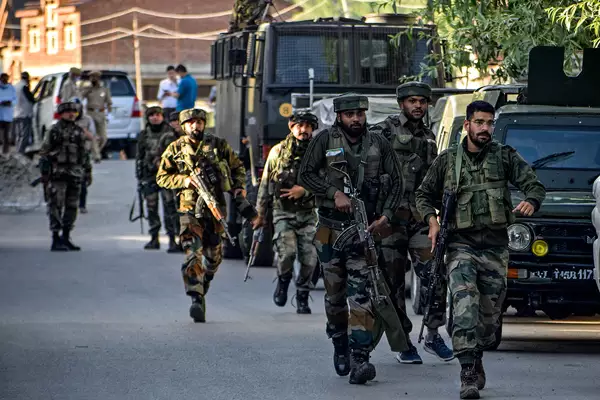The Rise of Militancy in Jammu and Kashmir can be seen in the recent incident where four Army personnel were killed in action in the encounter at Doda in Jammu.
Table of Content
- Emergence of a New Pattern in Jammu
- Factors Contributing to Resurgence of Militancy in Jammu and Kashmir:
- Current Militant Dynamics and Infiltration
- Challenges in Local Collaboration and Investigation Progress
- Conclusion
- Frequently Asked Questions (FAQs)
Emergence of a New Pattern in Jammu:
- The Jammu region, historically calmer than the Kashmir Valley, is witnessing a resurgence in militancy, particularly affecting districts like Doda, Kishtwar, Ramban, Kathua, Udhampur, Reasi, Rajouri, and Poonch.
- This resurgence targets pilgrims and security forces, marking a significant shift after nearly two decades of relative peace.
Factors Contributing to Resurgence of Militancy in Jammu and Kashmir:
- Key reasons include the redeployment of forces to the China border after the 2020 Galwan clashes, which weakened local security arrangements.
- Militants are strategically shifting their operations to the less-guarded Jammu region due to intensified security in the Kashmir Valley.
- Political and communal tensions in the region are exacerbated by the resurgence, challenging the narrative of enhanced security post-Article 370 abrogation.
Current Militant Dynamics and Infiltration:
- Militants have infiltrated into Jammu from Pakistan, with active groups primarily in the Poonch-Rajouri and Kathua-Doda-Basantgarh areas.
- The heavily guarded 192-km international border and 740-km Line of Control remain vulnerable to infiltrations due to challenging terrain and forested areas.
Challenges in Local Collaboration and Investigation Progress:
- The effectiveness of counter-terrorism efforts is hindered by communication gaps between locals and security forces.
- Investigations into high-profile attacks like the December 2023 ambush are progressing slowly, pointing to a complex operational network within the region involving local groups linked to larger militant organizations like Jaish-e-Mohammed.
Conclusion
To address the resurgence of militancy in the Jammu region effectively, a multi-faceted strategy is required. Strengthening local security measures, enhancing intelligence sharing between the military and local authorities, and rebuilding trust with local communities are pivotal. Moreover, a comprehensive policy addressing both the political and socio-economic underpinnings of unrest will be crucial to achieving long-term stability and peace in the region.
Ref: Source
| UPSC IAS Preparation Resources | |
| Current Affairs Analysis | Topperspedia |
| GS Shots | Simply Explained |
| Daily Flash Cards | Daily Quiz |
Frequently Asked Questions (FAQs)
What areas in Jammu are most affected by the recent increase in militancy?
Districts such as Doda, Kishtwar, Ramban, Kathua, Udhampur, Reasi, Rajouri, and Poonch are significantly affected by the resurgence in militancy.
How are militants infiltrating the Jammu region?
Militants have been infiltrating Jammu from Pakistan, particularly in the Poonch-Rajouri and Kathua-Doda-Basantgarh areas, exploiting the challenging terrain and forested regions.
How has the security situation in Jammu changed post-Article 370 abrogation?
Despite expectations for enhanced security post-Article 370 abrogation, the resurgence of militancy challenges this narrative, particularly with increased political and communal tensions.



